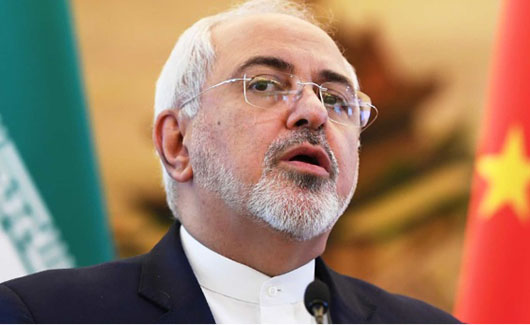FPI / February 14, 2024
In 2014, a time when Iran had few friends in the West, then-foreign minister Mohammad Javad Zarif set out to persuade the world to accept Iran’s developing nuclear program.
Iran’s decades of hostage-taking, Holocaust denial, and support for international terrorism made the international community wary at best.

According to his memoir, Zarif had a plan. He drafted a proposal that would result in the world giving the nod to Iran’s nuke program. But he needed help getting it off the ground.
Zarif enlisted the assistance of Brussels-based International Crisis Group, a highly regarded conflict-resolution organization with deep ties to Washington and other Western capitals.
Crisis Group drew millions of dollars in funding from Wall Street financiers, New York-based foundations and foreign governments to advance its mission of anticipating and preventing war and ethnic cleansing.
“This step was taken to ensure that the International Crisis Group could lay the foundation for publicizing and lobbying the draft’s content,” Zarif wrote in his 2021 Persian-language account of the nuclear talks, “The Sealed Secret”.
“[This] from the viewpoint of the nuclear negotiators, could serve as a stepping stone into the drafting phase.”
Zarif saw his outreach as a success; he wrote that Crisis Group incorporated Iran’s positions into its own reporting: “Utilizing the draft devised by the Iranian delegation, the International Crisis Group unveiled a document on May 9, 2014, titled ‘Iran and the P5+1: Solving the Nuclear Rubik’s Cube.”
Semafor revealed in late September an Iranian influence operation, called the “Iran Experts Initiative” (IEI), which was run by Zarif’s Foreign Ministry starting in the spring of 2014. The program developed ties with Western academics and think tankers to advance Teheran’s positions on the nuclear issue, leading up to the landmark agreement forged between Iran, the U.S. and other global powers in July 2015.
Two of the people named as IEI participants, Ali Vaez and Dina Esfandiary, are currently senior members of Crisis Group. Both Vaez and Esfandiary and Crisis Group have disputed Semafor’s description of the IEI, saying it was an informal grouping partially funded by a European government (which they declined to name) and that they weren’t tools of Iranian influence.
But the Zarif memoir, and a cache of leaked Iranian Foreign Ministry documents obtained by Iran International, a Persian-language news channel banned inside Iran, and shared with Semafor, document how useful Zarif and his Foreign Ministry saw Crisis Group as being a partner for its nuclear diplomacy well beyond the IEI.
Crisis Group disputes Zarif’s account, telling Semafor that the organization first shared its draft of the Rubik’s Cube report with Iran and the five permanent members of the UN Security Council plus Germany, or P5+1, “not the other way around,” according to spokesperson Elissa Jobson. She called into question Zarif’s credibility, noting that he lied in a number of instances in his memoir, such as claiming that the Islamic Republic never had a nuclear weapons program. “The Iranian government consistently criticized and attacked our work and serves to benefit from Zarif’s account of the situation,” she said.
The ties between Iran’s Foreign Ministry and Crisis Group, however, helped advance Teheran’s strategic aims in numerous other ways in the past decade.
Full Report . . . . Current Edition . . . . Subscription Information
Free Press International
